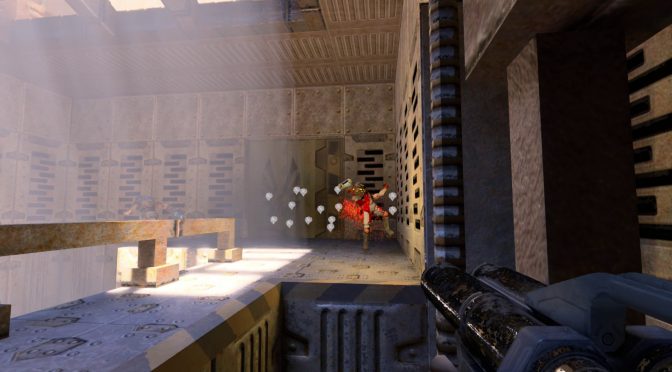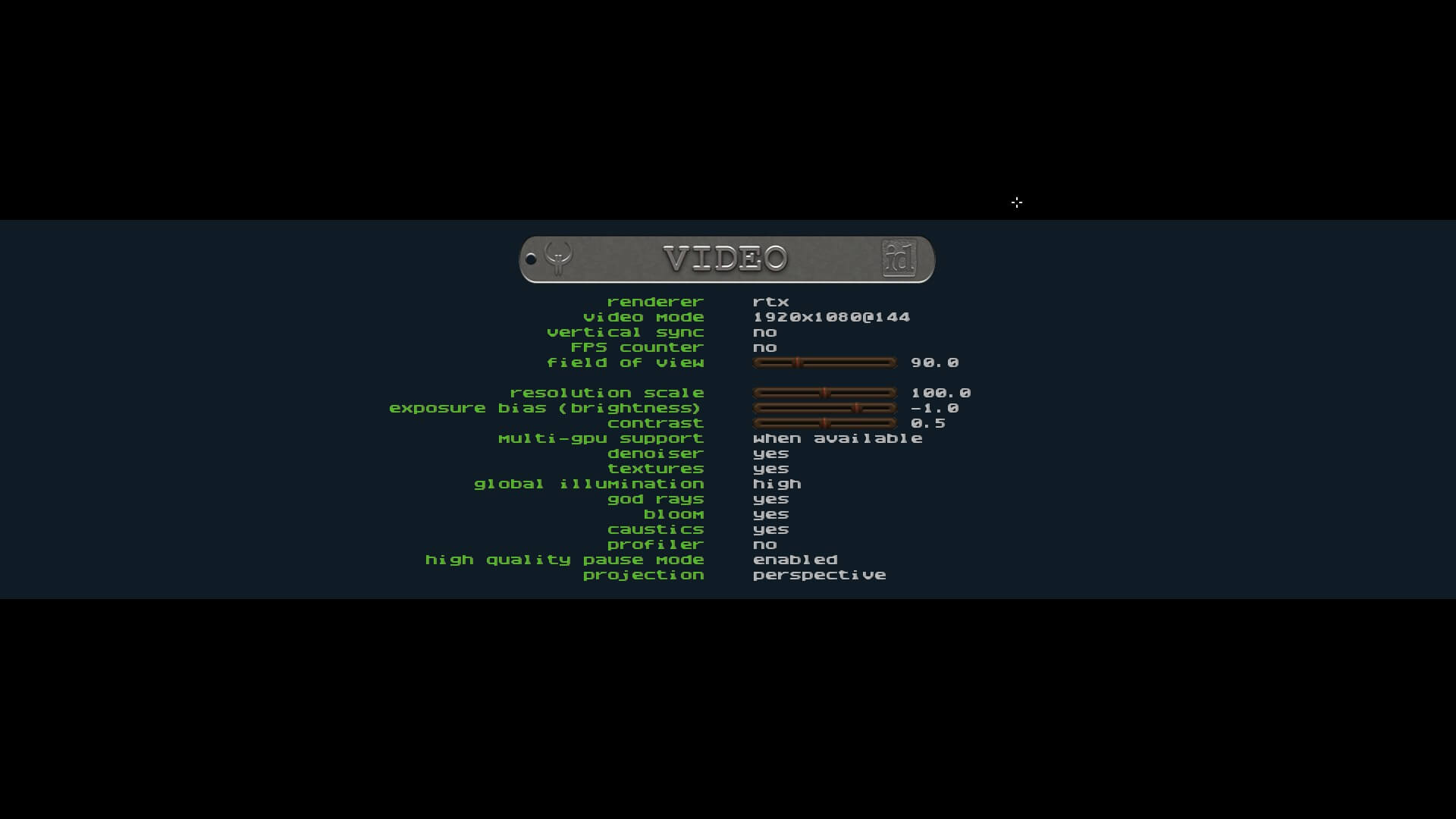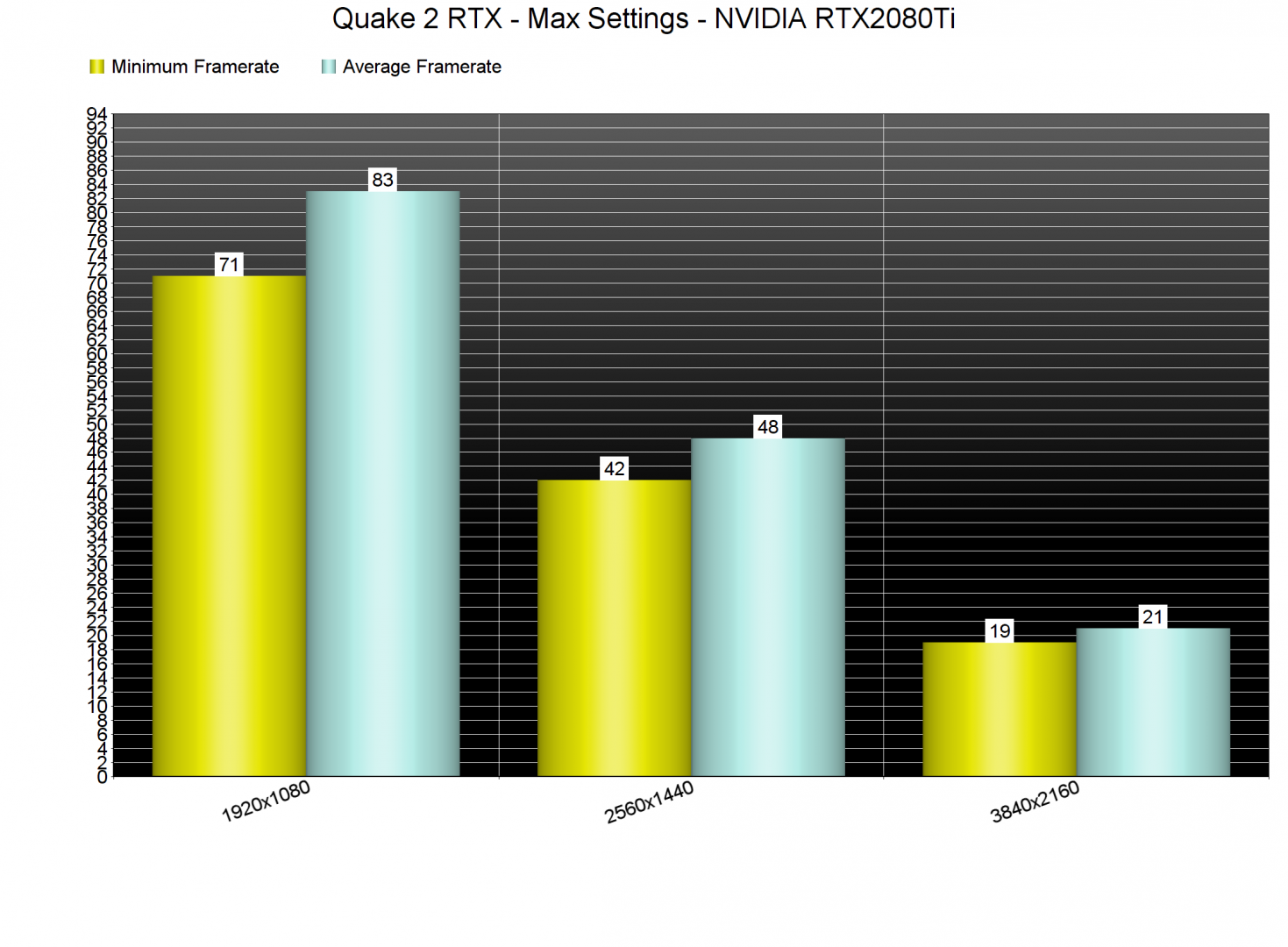Yesterday, NVIDIA released Quake 2 RTX that adds real-time path tracing effects to id Software’s classic shooter, Quake II. As such, we’ve decided to benchmark it on our NVIDIA GeForce RTX2080Ti and share with you some glorious 4K screenshots.
For this PC Performance Analysis, we used an Intel i7 4930K (overclocked at 4.2Ghz) with 16GB of DDR3 RAM at 2133Mhz, NVIDIA’s RTX 2080Ti, Windows 10 64-bit and the GeForce driver 430.86. Given how old Quake 2 actually is, it did not stress our CPU at all and we were GPU-bound during all scenarios.
By default, Quake 2 RTX uses Medium settings for Global Illumination. As such, the first thing we did was crank it up to High and enable all of the other new options that NVIDIA introduced to it.
At 1080p, our EVGA GeForce RTX 2080 Ti XC GAMING was able to run the game with an average of 83fps and a minimum of 71fps. However, and for some unknown reason, the framerate did not feel really smooth even though we were above 60fps. In order to get a completely smooth experience, our framerate had to be above 81fps at all times. My guess is that this is due to the path tracing implementation as at lower framerates (like say 20fps) the screen stutters by a couple frames (something that is not happening in other games even when running at such low framerates).
At 2560×1440, our RTX2080Ti was unable to offer a smooth gaming experience as we were getting a minimum of 42fps and an average of 48fps. As for 4K, our RTX2080Ti could even provide a “console” experience as it pushed a minimum of 19fps and an average of 21fps.
Now while performance is not that great on anything higher than 1080p, I do have to say that Quake 2 RTX is a beauty to behold in 4K. This is by far the best ray tracing/path tracing implementation I’ve seen, though – and as we’ve already said – it’s nowhere playable at such high resolutions.
Don’t get me wrong, the game still looks great at 1080p, however – and due to the denoise filter – it looks a bit blurry when compared to the 4K image.
In order to give you an idea, we’ve captured some screenshots and you can find below some 4K screenshots with High Global Illumination.
Last but not least, the game also allows you to pause it in order to get a better ray traced image. Below you can find some comparison screenshots between the real-time path tracing rendering (left) and the offline path tracing rendering (right). As you can see, the offline path tracing screenshots look incredible. The real-time screenshots look lower res due to the denoise filter which, even in 4K, brings a noticeable blur/low-res side-effect that has a negative impact on some shadows (pay attention to the shadow of the fallen enemy in the second comparison for example) and the textures. On the other hand, and under other conditions, the offline path traced version can look like an over-sharpened image due to some noise that is present (take for example the third comparison, in which the real-time version can look better despite looking a bit blurrier/softer).
Enjoy!

John is the founder and Editor in Chief at DSOGaming. He is a PC gaming fan and highly supports the modding and indie communities. Before creating DSOGaming, John worked on numerous gaming websites. While he is a die-hard PC gamer, his gaming roots can be found on consoles. John loved – and still does – the 16-bit consoles, and considers SNES to be one of the best consoles. Still, the PC platform won him over consoles. That was mainly due to 3DFX and its iconic dedicated 3D accelerator graphics card, Voodoo 2. John has also written a higher degree thesis on the “The Evolution of PC graphics cards.”
Contact: Email






















